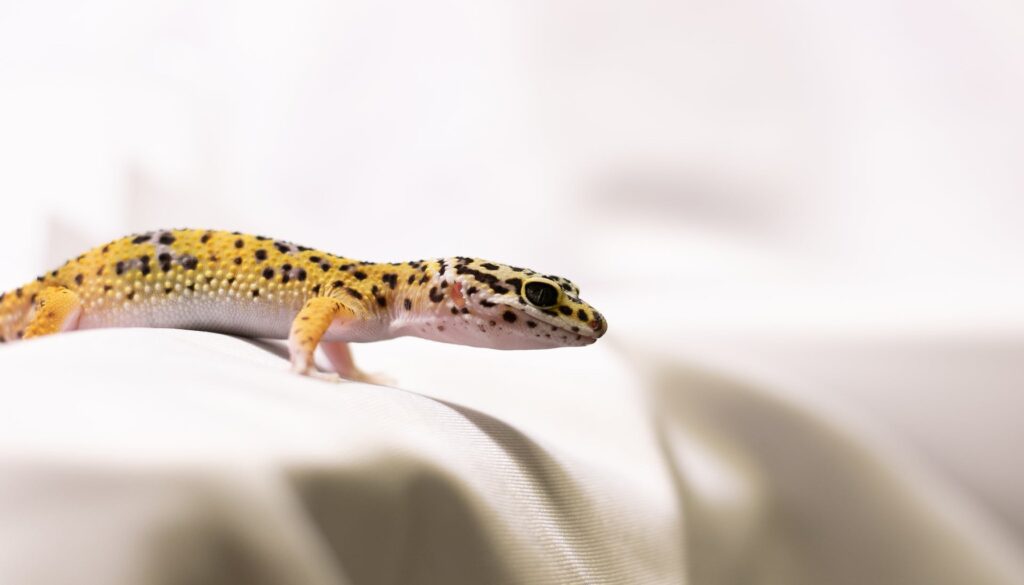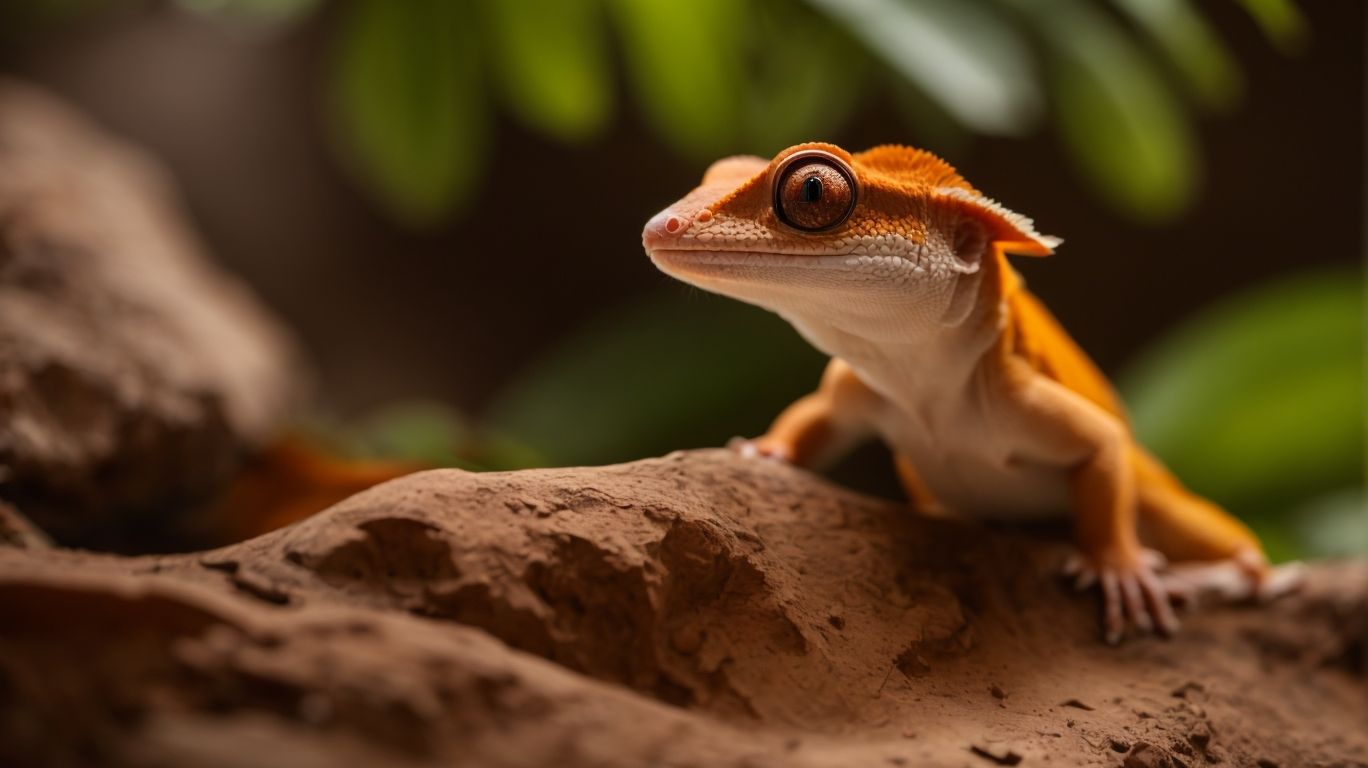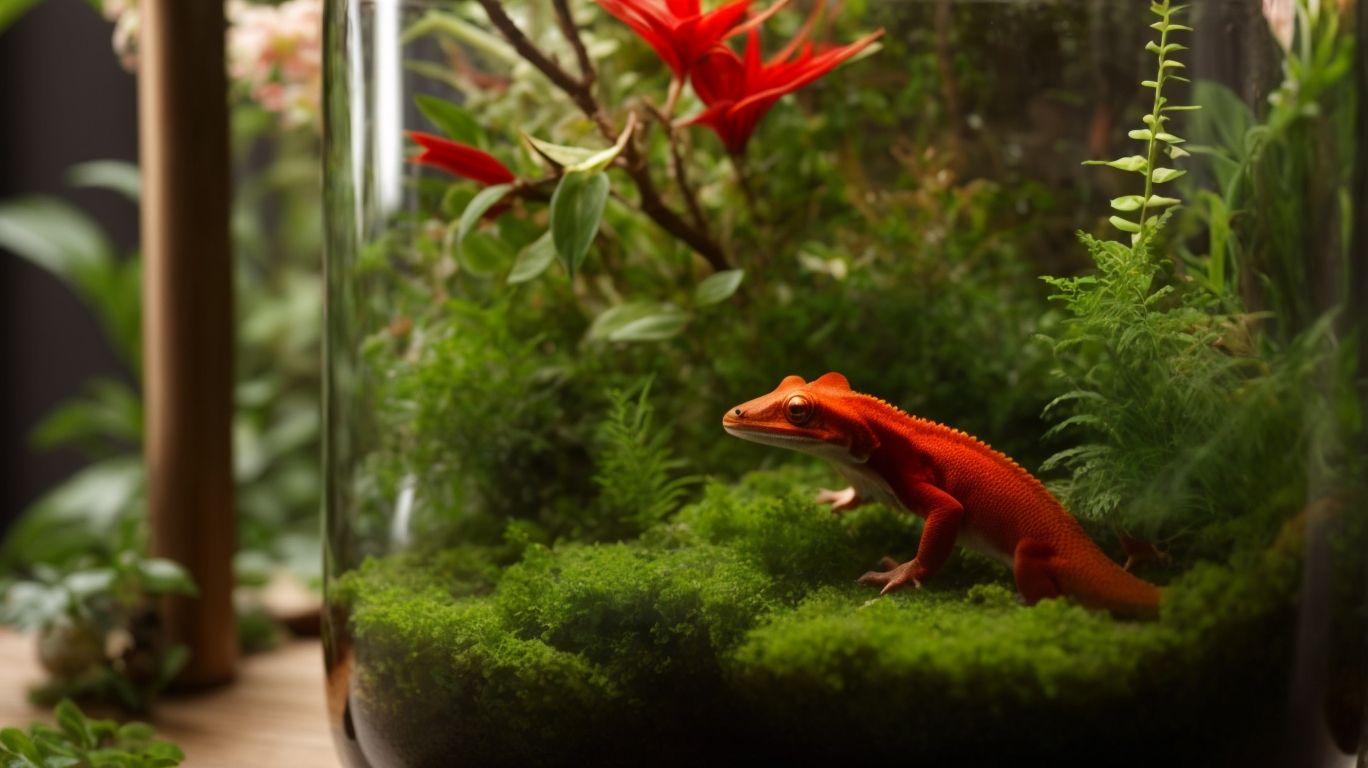
Keeping a Happy Home for Your Mack Snow Leopard Gecko
Table of Contents
Origin, History and Discovery of Mack Snow Leopard Gecko
The Mack Snow Leopard Gecko, scientifically known as Eublepharis macularius, is a captivating reptile that has gained popularity for its unique appearance. While the native habitat of Leopard Geckos includes rocky regions in Pakistan and parts of northwest India, it’s crucial to note that the Mack Snow morph is a product of selective breeding in captivity.
Breeders and reptile enthusiasts were amazed by its unique and captivating appearance. With its stunning white and black pattern, the mack snow leopard gecko quickly became a sought-after pet for reptile lovers around the world. Their snow-like appearance is enhanced by their spots and markings, creating a captivating visual display.
The mack snow leopard gecko is a result of selective breeding, aiming to enhance and intensify the beautiful snow and leopard patterns found in these reptiles. Through careful breeding and genetic manipulation, breeders were able to create geckos with a striking contrast of colors and markings.
In addition to their mesmerizing appearance, mack snow leopard geckos also possess fascinating genetic traits. They can produce offspring with different variations, such as the super snow and tangerine morphs. These genetic variations have further contributed to the popularity of the mack snow leopard gecko in the reptile community.
The discovery and subsequent breeding of the mack snow leopard gecko have opened up new possibilities for reptile enthusiasts and breeders alike. These geckos have become highly sought after, not only for their striking appearance but also for their relatively docile nature and low-maintenance care requirements.
Understanding the Temperament of Mack Snow Leopard Gecko
Understanding the temperament of your Mack Snow Leopard Gecko is crucial for providing the best care and ensuring a harmonious relationship between you and your gecko. These geckos are known for their docile nature, making them a popular choice for reptile enthusiasts. However, it’s important to remember that each gecko has its own unique personality and preferences.
Some Mack Snow Leopard Geckos may be more outgoing and sociable, while others may be more shy and reserved. It’s important to observe and understand your gecko’s behavior to better cater to their needs. Spend time observing their interactions with their environment, as well as their response to handling. This will help you gauge their comfort level and tailor your interactions accordingly.
Building trust and a bond with your gecko takes time and patience. Start by offering gentle handling and gradually increase the duration and frequency of interactions as your gecko becomes more comfortable.
Understanding the temperament of your Mack Snow Leopard Gecko will also help you identify any changes in behavior that may indicate health concerns or stress. By closely monitoring their behavior and providing a suitable and enriched environment, you can ensure your gecko remains happy, healthy, and content in their home.
Food and Water Requirements of Mack Snow Leopard Gecko
Proper nutrition and hydration are crucial for the health and well-being of your Mack Snow Leopard Gecko. These beautiful reptiles have specific dietary needs that must be met to ensure they thrive in captivity.
In terms of food, the primary diet of a Mack Snow Leopard Gecko consists of live insects. The best choices are small crickets, mealworms, and dubia roaches. These insects should be appropriately sized for your gecko, typically no larger than the width of their head. It’s important to provide a variety of prey to ensure a balanced diet and prevent boredom. Gut-loading the insects before feeding them to your gecko is also crucial. This involves feeding the insects nutrient-rich foods, such as leafy greens or commercial gut-loading products, before offering them to your gecko.
In addition to live insects, you can also offer occasional treats, such as waxworms or superworms, but these should only be given in moderation due to their higher fat content. It’s important to remember that a healthy diet for your Mack Snow Leopard Gecko should consist primarily of insects.
When it comes to hydration, providing a shallow dish of clean water in your gecko’s enclosure is essential. The dish should be easily accessible and large enough for your gecko to soak in if they choose. It’s important to regularly monitor the water dish and ensure it is clean and free of debris. Mack Snow Leopard Geckos may not drink water as frequently as other reptiles, but it should still be readily available at all times.
The Ideal Enclosure for Your Mack Snow Leopard Gecko
Creating the ideal enclosure for your Mack Snow Leopard Gecko is crucial to ensure their comfort and well-being. These geckos require specific environmental conditions to thrive in captivity, so it’s important to provide them with a suitable habitat.
First and foremost, the enclosure should be spacious enough to allow your gecko to move around and explore. A 20-gallon tank is typically sufficient for a single gecko, but larger enclosures are always better if space allows. It’s important to avoid overcrowding to prevent stress and aggression among multiple geckos.
To mimic their natural habitat, the enclosure should have a rocky or desert-like substrate. Options such as reptile carpet, slate tiles, or paper towels can be used as substrate, as they are easy to clean and do not pose a risk of impaction if ingested.
A proper temperature gradient is essential for your gecko’s thermoregulation. One end of the enclosure should have a warm spot ranging from 88-92°F (31-33°C), provided by an under-tank heating pad or heat lamp. The other end should be cooler, around 75-80°F (24-27°C), allowing your gecko to choose their preferred temperature. It’s important to monitor the temperatures with a thermometer and adjust accordingly.
In addition, enrichment plays a crucial role in the well-being of your Mack Snow Leopard Gecko, fostering both physical and mental stimulation. Provide a diverse environment within their enclosure by incorporating elements like hiding spots, climbing structures, and tunnels. Introduce various textures and materials for substrate to encourage natural behaviors such as burrowing. Offer a range of appropriately sized and textured objects for exploration and stimulation, such as reptile-safe plants and branches. Regularly rotate and rearrange the enrichment items to prevent habituation and keep your gecko engaged. This not only enhances their overall quality of life but also promotes a healthier and more active lifestyle for these fascinating reptiles.
Lastly, lighting is important for the overall well-being of your gecko. A combination of natural and artificial lighting is ideal. Use a full-spectrum UVB bulb to provide essential ultraviolet light, which aids in calcium absorption and prevents metabolic bone disease.
Handling Your Mack Snow Leopard Gecko
Handling your Mack Snow Leopard Gecko is an important aspect of caring for these beautiful reptiles. While they may be docile and calm compared to other gecko species, it’s still essential to handle them correctly to ensure their comfort and safety.
When it comes to handling your Mack Snow Leopard Gecko, it’s important to remember a few key tips. Firstly, always approach your gecko slowly and calmly. Sudden movements or loud noises can startle them, leading to stress and potential injury. Gently scoop them up by supporting their body and tail, being careful not to apply too much pressure.
It’s crucial to wash your hands thoroughly before handling your gecko to remove any oils or residue that may be harmful to their sensitive skin. Additionally, it’s a good idea to handle them over a soft surface, such as a towel or your lap, to prevent any potential falls or injuries.
Remember to always supervise any interactions with children or other pets to ensure the safety of both your gecko and those involved. And finally, it’s important to be mindful of the frequency and duration of handling. While they may enjoy human interaction, excessive handling can cause stress and potentially harm their delicate skin.
Addressing and Resolving Common Health Issues in Mack Snow Leopard Geckos
Just like any pet, Mack Snow Leopard Geckos can experience various health concerns throughout their lives. As a responsible owner, it’s essential to be aware of these common health issues and their potential solutions to ensure your gecko stays happy and healthy.
One of the most common health concerns in Mack Snow Leopard Geckos is shedding problems. Geckos shed their skin regularly, but sometimes the shedding process can become difficult or incomplete. This can result in retained shed or stuck shed, which can be uncomfortable for your gecko and lead to complications. To prevent shedding problems, make sure to provide a humid hide in your gecko’s enclosure. This can be a small hide with damp moss or paper towel to increase humidity during shedding. You can also gently mist the enclosure with water to help with the shedding process.
Another health concern to be aware of is respiratory infections. Symptoms of a respiratory infection in your gecko may include wheezing, coughing, nasal discharge, or difficulty breathing. If you notice any of these signs, it’s important to seek veterinary attention promptly. Respiratory infections can be caused by various factors such as improper temperature or humidity levels, poor ventilation, or bacterial or viral infections. Your veterinarian will be able to diagnose the infection and prescribe the appropriate treatment, which may include antibiotics or supportive care.
Mack Snow Leopard Geckos are also prone to digestive issues, such as impaction or constipation. These issues can arise from inappropriate substrate, such as loose or fine sand, or from consuming foreign objects. To prevent digestive problems, ensure you provide a suitable substrate that is easily digestible, such as reptile carpet or paper towels. Additionally, be mindful of the size of prey items you offer your gecko to prevent them from swallowing something too large.
It’s important to regularly monitor your gecko’s overall health and behavior. If you notice any changes in appetite, weight loss, lethargy, or any other concerning symptoms, it’s best to consult with a reptile veterinarian. They will be able to provide a proper diagnosis and recommend the appropriate course of treatment for your gecko.
Wrapping it Up
As we come to the end of our blog post, we hope you’ve gained valuable knowledge and insights into keeping a happy home for your Mack Snow Leopard Gecko. By understanding their origin, history, and unique characteristics, you can provide the best care possible for these captivating reptiles.
We’ve covered everything from their dietary needs and ideal enclosure setup to handling tips and common health concerns. By meeting their specific requirements, you can ensure that your gecko is living its best life and thriving in captivity.
Remember, proper nutrition, hydration, and a suitable habitat are essential for the health and well-being of your gecko. Providing enrichment and opportunities for mental and physical stimulation will also contribute to their happiness and overall quality of life.
By following the tips and guidelines outlined in this blog post, you can create a comfortable and healthy environment for your Mack Snow Leopard Gecko. The bond you form with your gecko through proper care and interaction will be rewarding and enriching for both of you.
Related Posts

Incubating Crested Gecko Eggs: Essential Techniques and Tips
Crested geckos are fascinating reptiles that are known for their…

Red Crested Gecko Health: Common Issues and Preventive Care
Are you a proud owner of a red crested gecko?…

Creating the Ideal Environment for Your Red Crested Gecko
Do you own a red crested gecko or are you…

No Comments